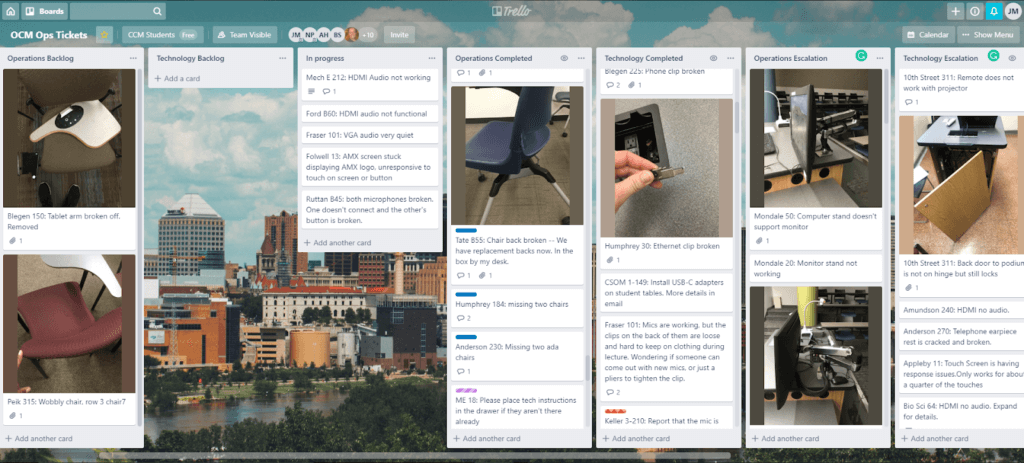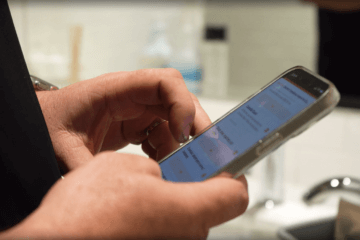The whole world has turned to remote work like never before, and that includes janitorial and field service teams. We’ve talked to many BSCs who have eliminated or downsized their office HQ . . . and even among those who haven’t, their clients aren’t coming in for meetings.
So how can janitorial and facilities teams adapt to the new norm as they work in the field or remotely, rather than coming back to the office?
The team here at OrangeQC has been working remotely from the very beginning. With more than a decade of WFH experience beneath our belts, as well as best practices that come from our clients around the world, we’re sharing what we’ve learned along the way.
The nature of work is changing for BSCs.
Teams are spending more time either working remotely or in the field. That means traditional offices are shrinking.
We recently spoke with a BSC that has cut their office space in half. They’ve shifted to a hybrid approach where most employees work from home, but they maintain a smaller office footprint with shared desks and conference rooms for meetings.
Teams are adapting to engage with employees, vendors, and customers virtually.
Embrace technology.
The beauty of technology is that it will still be helpful even if your team transitions back to the office! Technology for communication, project management, time tracking, and more can help keep everyone on the same page. Plus, it makes it easy for field service teams to access all the same data as the office team.
Looking for software? We’ve got some recommendations based on our own experience and what we’ve heard from the teams we work with.
Trello
Trello is like PostIts on steroids. It’s a very simple interface for organizing tasks, ideas, and more.
Here’s a sneak peak at one of the the University of Minnesota Office of Student Management Trello boards, which they shared as part of an APPA presentation:

Some teams like to use Trello for recurring projects (such as monthly deep cleans, routine disinfection, or maintenance/equipment projects). The Trello Card Repeater add-on is made for this: it automatically creates those recurring tasks. Then teams could manage the flow of those issues through their own Trello lanes.
Slack
Slack is the quintessential workplace chat. We use it for one-on-one video meetings, too.
You can create channels (which work like chat rooms) for internal teams, large customers, and more. This way, individual project sites could have their own chatroom for staff to chat in real time.
We routinely are asked about tools to help translate chat. Fortunately, there are many Slack translation add-ons that translate chat in real-time for seamless communication in the language that works best for your staff.
Google Suite
Gmail, Google Docs, Google Sheets, Google Drive . . . check, check, check, check. The user-friendly platform offers seamless logins to a wide variety of products. Everything’s stored in the cloud, so you won’t have to worry about forgotten laptops or swapping between work and home computers. You can even use mobile apps to view these documents while in the field.
Mailchimp or Campaign Monitor
- As we discussed in our article on communication, your organization should be communicating both internally as well as with the public and your customers. With Mailchimp, you can configure an audience and send routine email broadcasts to your existing customers, prospective customers, and much more.
Using a newsletter service is far better than BCC’ing your clients or employees because:
- It’s more professional. These services give you pre-made templates that resize to display properly on desktop computers and different mobile phones. You’ll get a clean, easy-to-read result.
- Delivery is more consistent, with fewer bounced-back emails that can get your account flagged as spam.
- You reduce errors, such as using the wrong list or forgetting to BCC all the recipients.
- They scale as you grow your customer list.
A recommended setup would include adding your customers to a new audience and tag them as Customers, and then using Mailchimp to send updates about your services, new offerings, and how your business continues to stand out. Then add prospective customers to the same audience, again with a tag for Prospect, and tailor your emails to focus on delivering value to their facilities.
If you’re new to email marketing, you’ll want to familiarize yourself with the basic laws of email privacy. In essence, you need permission from someone to add them to your marketing list. (Think of those boxes you check or uncheck when you give your email for a special offer: “Yes, I would like to receive newsletters from this company.”) Mailchimp has a helpful guide to break down who you can (and can’t) add.
Basecamp
Project management, internal communication, and more. The thing we like most about Basecamp is that you can make it as simple or in-depth as you like depending on the task. Giant long-term projects can have their own hub page with mini-tasks, a dedicated message board, files in one spot, and more; simple tasks get thrown on the monthly checklist.
Phone calls (yes, phone calls)
Email and the tools above are amazing, but if you find yourself going back and forth or you think there’s a misunderstanding, it’s time to make a call.
We get that no one wants be stuck on the phone or in endless video conference. However, a quick 2-minute call can often save you big headaches. Either you quickly clear up the issue . . . or you have the chance to talk things out until everyone’s on the same page.
Most remote working and project management tools have free trials that let you take things for a spin. We’ve been through different products for all of the above (except Google . . . we can’t quit you, Google) and adapted when our team’s needs changed.
All new technology takes adjusting, but if you find yourself constantly struggling against the system or trying to force it to do what you want, it’s defeating the entire purpose. (That’s the entire story behind OrangeQC, actually — replacing software that was so hard to use, no one bothered.)
You’ve probably experienced the same dynamic when your team was in the office. Expect it to happen more often now.
Other tips for remote work success
Great software sets a solid foundation for your team to function well remotely — but of course, it’s just the beginning. We’ve found the following strategies help foster better communication for remote teams.
Check in.
Check ins are an easy way to hear where everyone’s at without resorting to micromanaging.
For OrangeQC, we have an automatic check-in set up through Basecamp that asks everyone on the team what they’re working on, what they’ve completed, and what they’re blocked on. It’s really helpful for seeing everyone’s progress at a glance and making sure tasks don’t stay blocked.
Be clear about expectations.
Do you expect everyone to keep to a 9 to 5 schedule, or can you be more flexible? Should all emails be answered within a certain time-frame? Do you want everyone to be available in the morning for a team check-in? Do you expect people to check their email in the evenings or during off-hours? If someone needs to get ahold of you when you’re not working, what should they do?
Think through what you really need from your team and why. For example, rather than micromanaging and following up on every request, you might say something like, “I need you to reply to vendors within an hour or so during the workday so that our orders aren’t delayed.”
On the flip side, many roles don’t need to be on-call all the time — or can’t be, due to their employee status and compensation laws — and can have quite a bit of flexibility. It all depends on the nature of the job, and it’s OK if that’s different from team to team or person to person.
Embrace the benefits and set an example.
Working from home may be the norm now, but pre-pandemic, it was usually viewed as a perk.
Obviously, it’s not pre-pandemic, and working from home comes with its own set of challenges right now. (Our own team usually ventures out to coffee shops and coworking spaces for a change of scenery . . . I’m currently writing to you from a public park with WiFi .) So whenever you can, embrace the perks of WFH that are still there, such as no commute and more flexibility. If you expect people to be chained to their desks all day, they’ll be a lot less happy than if they feel they can take a walk around the block to clear their heads or juggle life with kids.
Set an example, too. For instance, in the early weeks of the COVID-19 shutdown, Matt (our CEO) sent out reminders to take care of ourselves and take breaks if need be. Example setting from the top of your organization or team is the best way to make sure everyone feels comfortable doing what they need to do.
We hope these tips are helpful for your team! As always, if there’s anything we can do to help, drop us a line at support@orangeqc.com and we’ll get back to you quickly.



